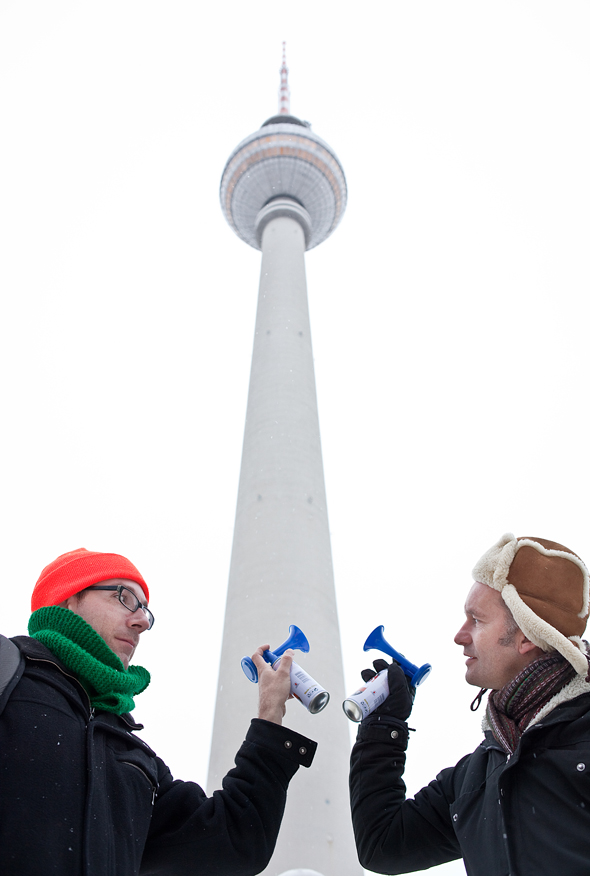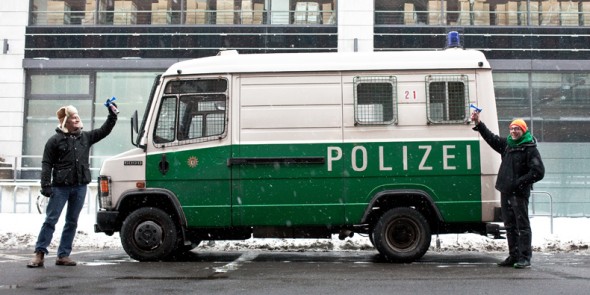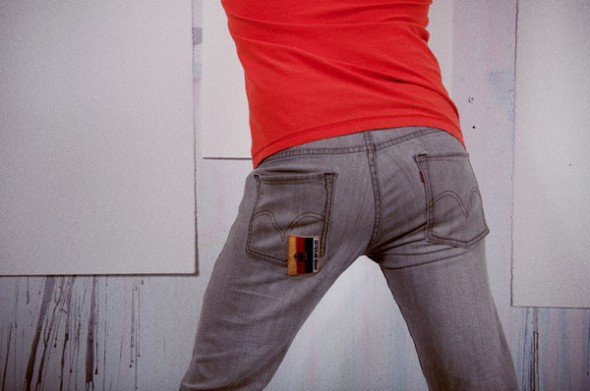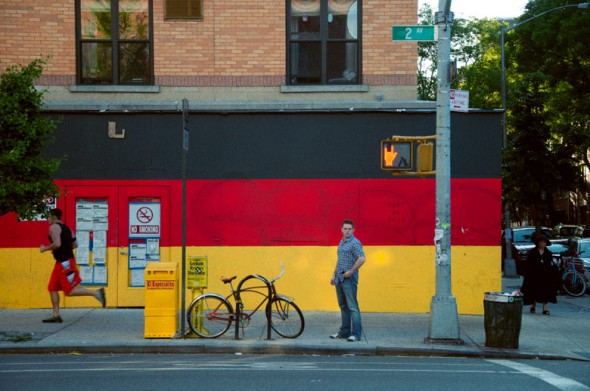by Clare Ros, photos by Mike Milosh // Dec. 6, 2010
On Saturday, December 4, 2010 I sat down with the artist Zefrey Throwell, and partners in performance/curators Per Schumman (Entwurf-Direkt, in Hamburg) and Malte Zacharias (Gartenstudio, in Berlin) to discuss Throwell’s upcoming series of events, including a city-wide performance through the streets of Berlin, a photographic exhibition at the Gartenstudio in Berlin, and film screening at Entwurf-Direkt in Hamburg.
CMR: Please tell us about your entropy project starting with the first movement, which took place in New York earlier this year.
ZT: I did a performance at the Whitney Biennial this year, 2010 called Entropy Symphony: Movement One. It was set up as 25 performances in 5 minutes with 75 performers, and I attempted to break every taboo I had ever heard of for a museum at once. Now I was approached by members of the Whitney and asked to do a project, open-ended, because they had seen other things I had done, and they thought the Whitney Biennial was boring this year. So they said, “We’d like to invite you to do something, we don’t want to know what it is, and we don’t know you, but come do something, goodbye.”
So I set this up, I tried to break every rule I’d ever heard of in a museum. So it started with me forging a painting, and then sneaking it in, and then pretending to steal it off the wall while my mother screamed at me that I was robbing it. Then a large chase ensued with security chasing me down the stairs, and I’ll tell you something, unfortunately I had to wait on the stairs for security to catch me. So if I had a real piece, I would have been out the door!
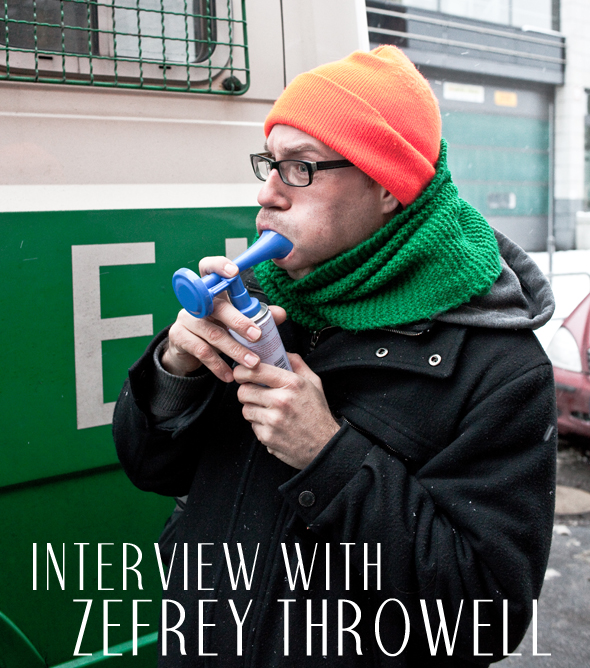
But I waited for them to catch up so it would be more of a chase. And then as I was going down the stairs, some good samaritan, unbeknownst to me who he was, a guy wearing a white T-shirt jumps out of the woodwork and tackles me, when security guards jump on me right afterwards – ripping what they think was a real Charles Ray at the time, which would have totally defeated the purpose of trying to stop the burglar and destroy the thing that he was actually stealing.
So right when the guards tackle me on the ground, was the signal for the rest of the performances, 24 performances, to start. They were everything: people wrestling a duck on the ground, four couples breaking up very violent emotional break-ups, people smoking in the museum, a massive paper airplane fight, people fucking in the bathrooms, people naked appreciating art, people spooning on the ground, people naked, enacting DuChamp’s Nude Descending a Staircase No. 2. There was fart spray in the elevator. There were two dueling seizures, an epileptic seizure and a back seizure with a fake doctor who couldn’t help either of them. It was quite something.
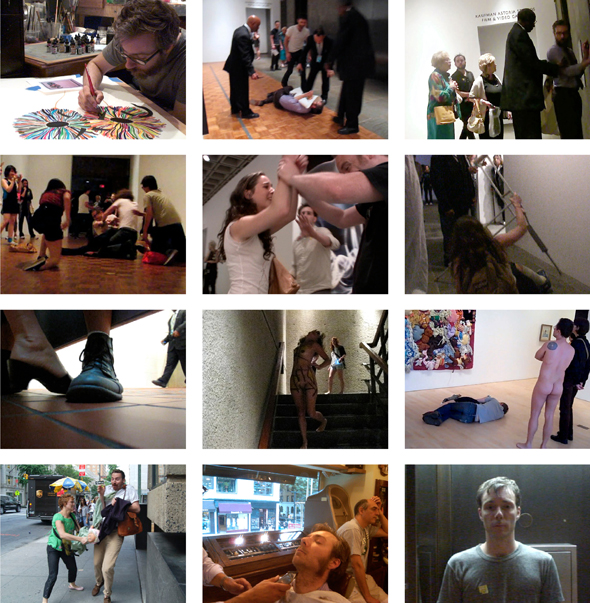
Entropy Symphony: Movement One (2010); video stills by Emma Hall, Amanda Cole, Jomar Statkun, Nadja Frank, Aaron Garson, Ross Elgie, Eric Clinton Anderson, Sarah Petersiel, & Janet Elliott
And all of this, was to create the symphony played on the guards’ walkie–talkies, so all the walkie-talkies at once go off, and it just sounds like this cacophonous electronic static, just like: “bzzzzzz-wegahht-ohhhgod-there’s-an-emergency-you-gotta-get-bzzzzzz-down-here-on-fourth-floor-bzzzzzz-what’s-wrong-with-you-bzzz-what-the-hell’s-goin-on!?” You could hear it through the whole museum, the sound on the walkie-talkies, the loud, just exploding of, “Habzzzzzdaaagahhhh-whoooobzzzzda-whaaaabzzzz!”
So that was the first symphony, and now the second symphony is going to be here in Alexanderplatz and then all over Berlin with air horns.
CMR: So before we move onto the second movement, I’m curious, how did the first movement end?
ZT: I had been growing a beard and my hair long for three months, usually I have my head shaved. So I grew a beard, grew long-ish hair for me, and I did the first performance in a suit and tie. Then immediately afterwards I go out to the barber who shaves my beard and cuts my hair. Then I put on a t-shirt, shorts, and flip-flops, and put contacts in, and go back, totally different. Then I get down and try to take the painting off the wall, succeed, put it back on the wall, and then I go talk to the guard, who had just had me pinned against the wall an hour before with this elbow, and I was asking him if he had seen anything good that day. To which he responded, “It’s been a hell of a day!”
CMR: So how did you get the idea to use the air horns, and how is this piece connected to the first entropy movement?
ZT: I am a large fan of John Cage, and specifically his operations using chance and the kind of random forces of people and nature to create sound that is then interpreted as music. So entropy is the idea that things within a closed system, like capitalism or a Macy’s shopping line, or any closed system, tends toward chaos. That system will always collapse, on itself and then grind to a halt.
So, similarly, creating concerts where the sound is designed to collapse, where things are defined with chaos as the goal end, but also a communal sound. So this is the sound of Berlin itself, as the instrument, being played by the people, with a loose framework, which is the piece that I’ve written for them, but it’s actually because no one’s going to be exact, no one’s a maestro of the air horn – so it will be sloppy, it will be personally interpreted by the people of Berlin. So it is the city itself being played, similar to how the museum itself was played as an instrument.
CMR: And so how long do these air horns last, 30 minutes?
ZT: Well it depends on how much you use them.
MZ: I hope people will play them for five minutes. You have to be quite convinced of what you’re doing.
ZT: Well, if you were to just give people air horns and no instruction, they’d blow them for probably ten seconds, throw them away and then be like yeah that was fun. But if you give them a sheet of paper that has times when they’re supposed to blow it and how they’re supposed to blow it, such as a framework for a symphonic arrangement, then people will stay and will play it.
We’ve done some tests, I did some in New York in Mid-town Manhattan, and the idea is that this air horn is loud as hell. But the beauty is that the symphony itself is not loud as hell, because people will be spread out. So each time you blow it, it will be loud around you, but the rest will be like distant elephants through this kind of moaning across the entire city that you’ll be able to hear. If you listen, it will be very faint over there, a little louder over hear, so the whole city is this kind of moaning structure coming through the streets.
CMR: How did you compose the composition? Did you have a structure it’s based on? Did you write it originally with midi-notes on a keyboard and then transpose it to a hundred people?
ZT: Yeah, it’s a composition that I made up. So as far as the instrument of the airhorn, that he have here- this produces one sound, actually three tones, “baaa-AHHHH-uhhhh.” But if you shorten the length of the horn it produces different notes. Now they’re not going to be a hundred different notes, but four or five different notes. But played over a distance it will sound different. The note sounds different as it is played over two hundred meters away, than when you’re standing in front of it.
CMR: And then where is the recording source going to be?
ZT: I’m going to be here in Alexanderplatz, which is our meeting point. And the people that are playing the horns are going to be spread out over half an hour by foot – or train depending on how quickly they can travel.
PS: So it’s not planned to hear the sound together.
ZT: Right, that’s one of the beautiful things. Similar to the Whitney, you can’t hear or see the whole thing at once. No one is going to be able to hear it all. I will only be able to hear pieces of it. And then the whole is created throughout the city. There were so many things going on at the Whitney – on each floor and outside that you would never be able to put it all together. The only way that it’s put together – similar to this – is by people talking after the fact, a dialogue of:
“Did you hear that?”
“Well yeah but it didn’t sound like that”
“That was a crazy sound!”
“Well no it didn’t sound like that at all it was very quiet…”
Those stories create the framework afterwards.
CMR: And following the finale of the symphony’s second movement, the opportunity for dialogue will commence at your exhibition opening at the Gartenstudio?
ZT: Yes, on Wednesday after the symphony I have a show opening called, There’s a Hole Only Germany Can Fill. So the story is that I had two things confront me at the same time. As crazy as they may be, they collided inside my brain, and came out with one pragmatic and conceptual solution. The first problem was wrestling with the theories of Joseph Beuys, a German favorite. And the second was that I had a hole in the ass of my favorite jeans. And I was looking for something, because I was like, “I can’t throw these jeans away, they’re my favorite jeans! And what the fuck’s up with Beuys, was he serious about that?”
And so at the same time I found a small German flag patch. Someone had given it to me, and I was like, “What am I going to do with German flag patch?” So I just threw it to the side. Then I found it, and at that precise moment all the factors came together. I sewed the patch on my ass and I thought, “There’s a conceptual and pragmatic hole that only Germany can fill.” So I started taking this massive photographic project of people with German flags, asking them the question, “What hole can Germany fill for you?” And there are a lot of different places that people put it. There are some spicy ones, don’t worry!
Additional Info
Entropy Symphony: Movement Two
Wednesday, December 8, 2010; 5pm (total time commitment: half hour)
Performance starts: 5:30 pm sharp and ends at 5:35 pm
Location: Meet at Alexanderplatz in front of the Fernsehturm at the side of the Alexanderplatz S-Bahn.
Get airhorns and sheet music, then disperse to street corners.
Zefrey Throwell is looking for volunteers to play one of 100 air horns! This will be a 5 minute outdoor music piece played by 100 people on the street corners all over Berlin. The musical instruments will be air horns tuned to different notes and each person will be given a sheet of paper with timed notes to play. The spacing will be evenly distributed through all of downtown so the city itself becomes the resonating chamber. In essence, Berlin will be the instrument singing the song of its residents.
*The first Entropy Symphony was this year at the closing of the Whitney Biennial in NYC.
View the trailer for it here: zefrey.com
RSVP: facebook.com
No musical experience is necessary to participate! All you need is a watch and the desire to make some noise!
Gartenstudio
“There is a Hole Only Germany Can Fill”
Wednesday, Dec. 8, 2010; 6–9pm
Naunynstraße 53 Berlin
“The idea came to me one day when wrestling with two simultaneous headaches, Joseph Beuys and a hole in my favorite jeans. There seemed to be just one conceptual as well as pragmatic answer to the whole mess. One hand washes the other and marks down a theoretical triumph for Germany.” – Zefrey Throwell
Galerie-Entwurf Direkt
“Damn it sweetheart, This is our city!”
Friday, Dec. 10, 2010; 8pm
Eulenstraße 81, Hamburg
The film program includes: Entropy Symphony: Movement One; Guggenfight; Throwhite
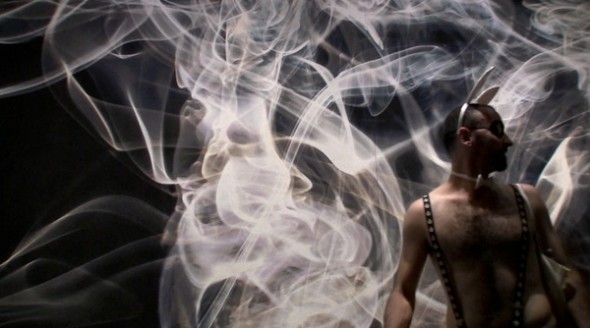
Entropy Symphony: Movement One (2010); video still by Aaron Garson
“If you are in Hamburg, this will be one hell of a time! I don’t often screen things back to back, so this will definitely be the value pack!” – Zefrey Throwell


